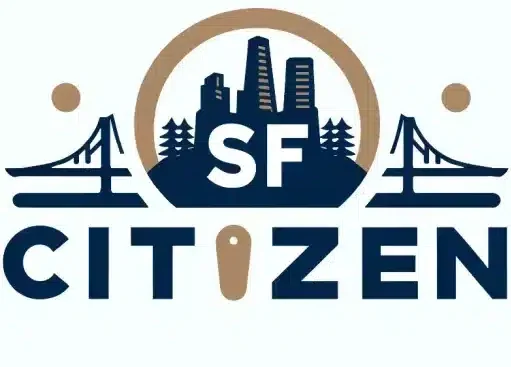The Contra Costa Canal, a 48-mile aqueduct constructed in the 1930s and 40s, plays a crucial role in the water infrastructure of the San Francisco Bay Area. As part of the Central Valley Project, the canal serves the diverse water needs of the region, including municipal and industrial purposes.
In This Article
Key Points
- The Contra Costa Canal is vital to San Francisco’s water infrastructure, providing water for municipal and industrial use.
- The Main Canal Modernization project aims to enhance the canal’s efficiency, safety, and resilience.
- The canal is essential for supplying water to various cities in the region, including Concord, Walnut Creek, and Martinez.
The Historical Context of the Contra Costa Canal
The origins of the Contra Costa Canal date back to the 1930s when construction began as part of the federal Central Valley Project. The canal was designed to transport fresh water from the Sacramento-San Joaquin Delta to the eastern and central parts of Contra Costa County. Over time, the canal’s purpose evolved from primarily serving agricultural needs to meeting the growing municipal and industrial water demands of the region.
Main Canal Modernization: Enhancing Efficiency and Safety
The Main Canal Modernization project is a multiyear effort aimed at improving the canal’s conveyance system to meet long-term needs for safe, reliable, and cost-effective water delivery. The project involves studying alternative facility configurations, evaluating construction approaches, and addressing challenges such as water quality, supply, and infrastructure resilience. Modernizing the aging water infrastructure is crucial for ensuring the canal’s continued effectiveness in serving the region’s water needs.
The Contra Costa Canal System: A Closer Look
The Contra Costa Canal system consists of several key components, including the Main Canal, Loop Canal, and Rock Slough Intake. The canal serves various areas in the region, such as Concord, Walnut Creek, Pleasant Hill, and Martinez. The communities of Clyde and Knightsen also play significant roles in the canal’s operation.
Water Infrastructure and Environmental Considerations
Maintaining the safety and quality of the water supplied by the Contra Costa Canal requires addressing various environmental factors. Earthquakes, landslides, evaporation, and seepage pose risks to the canal’s integrity and water supply. Strategies for mitigating these challenges include modernizing infrastructure, implementing water conservation measures, and utilizing off-stream storage facilities like the Los Vaqueros Reservoir.
The Canal’s Role in Regional Water Supply
The Contra Costa Canal supports the diverse water needs of the San Francisco area, serving both municipal and industrial purposes. The canal’s water supply is critical for the region’s growth and development, and the ongoing Delta Conveyance project aims to enhance water availability and distribution. Balancing the various water demands while ensuring the canal’s efficiency and reliability is a key priority for water managers in the region.
Economic Aspects: Maintenance Costs and Funding
Maintaining and operating the Contra Costa Canal involves significant costs. Funding for canal operations and modernization projects comes from various sources, including federal and local agencies. The economic benefits of a well-maintained canal system extend beyond water supply, as it supports the region’s overall growth, development, and quality of life.
Future Directions and Challenges
Looking ahead, the Contra Costa Canal faces potential challenges related to climate change, population growth, and aging infrastructure. Ongoing projects and plans, such as the Main Canal Modernization, aim to address these issues and ensure the canal’s long-term sustainability. Innovative water management practices and continued investment in infrastructure will be essential for meeting the region’s evolving water needs.
FAQ
What is the Contra Costa Canal, and why is it important?
The Contra Costa Canal is a 48-mile aqueduct that supplies water to various cities in the San Francisco Bay Area for municipal and industrial purposes. It is a crucial component of the region’s water infrastructure, ensuring a reliable water supply for growth and development.
How does the Main Canal Modernization project impact the region?
The Main Canal Modernization project aims to enhance the canal’s efficiency, safety, and resilience by studying alternative facility configurations, evaluating construction approaches, and addressing challenges related to water quality, supply, and infrastructure. The project’s success is vital for ensuring the canal’s continued effectiveness in serving the region’s water needs.
What measures are taken to ensure canal safety and water quality?
Maintaining canal safety and water quality involves addressing environmental factors such as earthquakes, landslides, evaporation, and seepage. Strategies include modernizing infrastructure, implementing water conservation measures, and utilizing off-stream storage facilities like the Los Vaqueros Reservoir.
How does the canal system contribute to the water supply in San Francisco?
The Contra Costa Canal supports the diverse water needs of the San Francisco area, serving both municipal and industrial purposes. The canal’s water supply is critical for the region’s growth and development, and ongoing projects like the Delta Conveyance aim to enhance water availability and distribution.
What are the main challenges facing the Contra Costa Canal in the future?
The Contra Costa Canal faces potential challenges related to climate change, population growth, and aging infrastructure. Addressing these issues will require innovative water management practices, continued investment in infrastructure, and the successful implementation of projects like the Main Canal Modernization.

